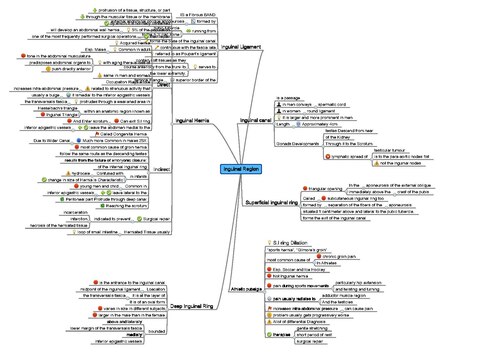Groin
The groin is a critical anatomical region located in the human body at the juncture where the trunk merges with the lower limbs. It serves as a passageway for several vital structures and is delineated from the abdomen by a robust wall comprised of muscle and tissue. The groin possesses two key openings: the inguinal canal and femoral canals, designed to facilitate the movement of nerves, blood vessels, and various other structures between the abdomen and the legs.
In males, a unique structure called the spermatic cord traverses through the inguinal canal, connecting directly to the testicle.
Other Names
While commonly referred to as the groin, this region is also known as the inguinal area or the inguinal canal.
Anatomy of the Groin
The inguinal canals manifest as two prominent creases on either flank of the front part of the body, precisely at the intersection of the abdomen and the lower limbs. This zone is also identified as the medial (adductor) compartment of the thigh.
Boundaries
The boundaries of the groin are defined by several anatomical landmarks which demarcate its extent and offer structural integrity.
Groin Lymph Nodes
Lying beneath the skin of the groin are specialized lymph nodes, constituents of the immune system. These nodes have the potential to enlarge in response to various conditions. Commonly, simple infections can cause swelling. However, more severe ailments, such as cancer, can also be a causative factor, although less frequent.
Muscles
A suite of hip adductor muscles constitute the groin. These include the adductor brevis, adductor longus, adductor magnus, gracilis, and pectineus.
Blood Vessels
The groin is irrigated by a network of blood vessels, ensuring adequate blood supply to this region and structures within it.
Nerves
One of the main nerves servicing the groin area is the Obturator nerve. It plays a pivotal role in the sensation and motor functions of the region.
Common Problems
Several ailments and injuries can afflict the groin. Some of the most prevalent include:
- Groin pain: Often a result of strain, overuse, or injury to the muscles, ligaments, and tendons of the groin.
- Inguinal hernia: A condition wherein a portion of the intestine protrudes through the inguinal canal.
- Groin injuries: These can be sprains, strains, or more severe forms of trauma to the groin area.
Latest articles - Groin
Groin on Wikipedia
| Human regional anatomy | ||||||||||
|---|---|---|---|---|---|---|---|---|---|---|
|
| Anatomy and morphology | ||||||||||
|---|---|---|---|---|---|---|---|---|---|---|
|
Groin
Transform your life with W8MD's budget GLP-1 injections from $125.
W8MD offers a medical weight loss program to lose weight in Philadelphia. Our physician-supervised medical weight loss provides:
- Most insurances accepted or discounted self-pay rates. We will obtain insurance prior authorizations if needed.
- Generic GLP1 weight loss injections from $125 for the starting dose.
- Also offer prescription weight loss medications including Phentermine, Qsymia, Diethylpropion, Contrave etc.
NYC weight loss doctor appointments
Start your NYC weight loss journey today at our NYC medical weight loss and Philadelphia medical weight loss clinics.
- Call 718-946-5500 to lose weight in NYC or for medical weight loss in Philadelphia 215-676-2334.
- Tags:NYC medical weight loss, Philadelphia lose weight Zepbound NYC, Budget GLP1 weight loss injections, Wegovy Philadelphia, Wegovy NYC, Philadelphia medical weight loss, Brookly weight loss and Wegovy NYC
|
WikiMD's Wellness Encyclopedia |
| Let Food Be Thy Medicine Medicine Thy Food - Hippocrates |
Medical Disclaimer: WikiMD is not a substitute for professional medical advice. The information on WikiMD is provided as an information resource only, may be incorrect, outdated or misleading, and is not to be used or relied on for any diagnostic or treatment purposes. Please consult your health care provider before making any healthcare decisions or for guidance about a specific medical condition. WikiMD expressly disclaims responsibility, and shall have no liability, for any damages, loss, injury, or liability whatsoever suffered as a result of your reliance on the information contained in this site. By visiting this site you agree to the foregoing terms and conditions, which may from time to time be changed or supplemented by WikiMD. If you do not agree to the foregoing terms and conditions, you should not enter or use this site. See full disclaimer.
Credits:Most images are courtesy of Wikimedia commons, and templates, categories Wikipedia, licensed under CC BY SA or similar.
Contributors: Prab R. Tumpati, MD


